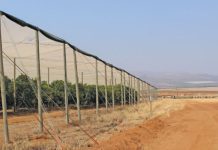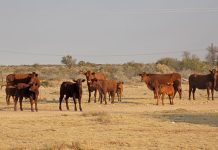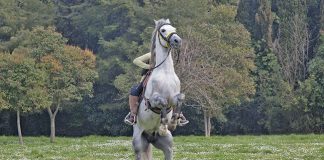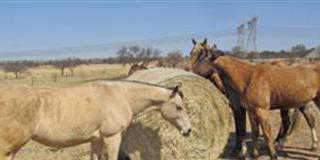Around a joint or tendon is a capsule or sheath that produces synovial fluid, which acts as lubrication. If the capsule is damaged by percussion or overstretching, it produces extra synovial fluid. This then makes the capsule bulge. This bulge is called a windgall.
They are usually found on the hind legs, but can also be found on the front legs. The signs of a windgall are soft, round, fluid-filled swellings, about 2cm in diameter on either side of the fetlock, not accompanied by heat, pain or lameness. As you increase the workload, so will the size of the swelling increase.
Windgalls have many causes.
Too much work on unsuitable terrain, poor nutrition and adverse immune system reactions can all contribute to windgalls appearing. If the immune system is reacting adversely to an inoculation or viral infection, then windgalls have a tendency to flare up. Older horses are affected by windgalls more frequently.
Treatment of a windgall is an antiphlogistine poultice and cold compresses. Soak the leg in Epsom salts and lukewarm water for 20 minutes, cold-hose the entire leg for 20 minutes, and apply a kaolin-based poultice to the affected area. Follow the instructions on the tub. Repeat until the swellings have subsided. It is a very good idea to keep off hard surfaces when trotting or cantering. If you ride on roads, keep to the grass verge or on the thicker sand stretch on a dirt road. Feed a tablespoon of garlic every day as this will help to clean the blood. Make a tea from dandelion and parsley. Put this tea in your horse’s food every morning – it will help to rid the body of excess fluid. Feed echinacea to help boost the immune system. Apis Mel 30c (concentration) will speed up the reabsorption of the excess fluid. Give 1ml in bottom lip three times a day. Applying a thin layer of arnica to the site will help reduce the inflammation. Kali Bichromium 30c helps prevent the fluid being released through the skin.
Once the windgalls have gone, you should let your horse work on soft, level surfaces. This will help prevent the malady from returning soon. Ask your farrier to roll the shoe or toe to help aid with the break-over of the foot. This will also lessen the effects of percussion. Any work should be fine, as long as your horse’s body has been prepared for it gradually. If there is heat, pain or lameness, have the leg examined further. – Kim Dyson
Contact Kim Dyson on 082 • 888 6511. |fw













